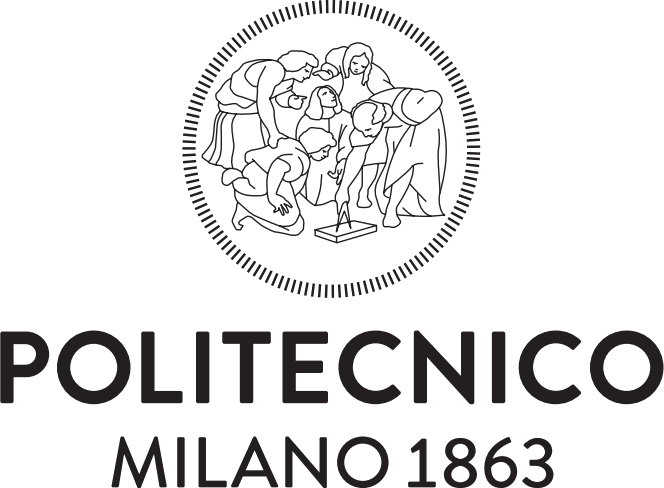PRIN 2022
Transport phonema in low dimensional structures: models, simulations and theoretical aspects
Project Description
Transport phonema in low dimensional structures: models, simulations and theoretical aspects
The project tackles relevant issues concerning the mathematical modeling and simulation of electrostatics and charge transport in 2D crystals, e.g. graphene and TM dichalcogenides, and structures such as nanoribbons and nanowires or polymeric nanofibers and tubes, where the presence of confinement effects allows the formal description of the carrier flow as a two- or one-dimensional electron gas. Due to the peculiar electrical and mechanical properties, graphene and TMD are considered very promising materials for future electron devices and important components for composite functional materials. While for electron devices based on standard semiconductor materials the efficiency of off-the-shelf commercial simulation tools is well established, the same does not hold for the mentioned 2D materials. Besides, by increasing the miniaturization of devices, hot-spots are observed, that are zones with very high crystal temperature due to the release of energy by highly energetic electrons. This makes thermal effects of primary importance. Moreover, composite functional materials consisting of blends of different polymers or of a mix of polymeric materials and nanoparticles made of graphene or other semi-conducting materials have also been recently considered for their promising electrical and thermal properties (polymeric insulators including graphene nanoparticles and graphene-polymer composites).
The main goals of the project are the following. The analytical properties of the Schrödinger equation in confined structures and open systems will be investigated. Efficient stochastic Monte Carlo schemes for the Wigner equation will be developed including collisions. Direct solutions of the semiclassical Boltzmann equations will be obtained by developing and employing advanced numerical schemes based on the discontinuous Galerkin methods for studying the electron-electron interaction and the charge transport in nanoribbons, nanowires and quantum dots. Similarly, phonon transport with coupling to the electron flow in graphene will be tackled. Thermal effects will be introduced along with the piezoelectric ones and mechanical stresses. Macroscopic models will be deduced from the transport equations by using the moment method and obtaining the needed closure relations by means of the Maximum Entropy Principle. The obtained models will be used to simulate graphene field effect transistors. In order to allow efficient simulations of nanocomposites, numerical methods for coupling models with different dimensionality will be developed, focusing in particular on Finite Element/Embedded Interface to simulate interfaces with complex geometries that are not aligned to the bulk mesh; upscaling techniques will be applied to evaluate macroscopic material properties from nanoscale modeling of nanostructured materials. For disordered materials, effective macroscopic transport models and techniques to infer model parameters from experimental data will be developed.
Duration: 24 months
Main ERC field: PE - Physical Sciences and Engineering
ERC subfields: PE1_12 Mathematical physics, PE1_19 Scientific computing and data processing, PE1_21 Application of mathematics in sciences
Research Units
Università degli Studi di Catania
Vittorio Romano (Principal Investigator)
Partecipants
- Orazio Muscato (Università degli Studi di Catania)
- Rita Tracinà (Università degli Studi di Catania)
- Vito Dario Camiola (Università degli Studi di Catania)
- Giovanni Mascali (Università della Calabria)
External Partecipants
- Giovanni Nastasi (Università degli Studi di Enna "Kore")
- Giulia Elena Aliffi (Università degli Studi di Catania)
Università degli Studi di Palermo
Fabio Bagarello (Associated Investigator)
Partecipants
- Michele Sciacca (Università degli Studi di Palermo)
- Francesco Gargano (Università degli Studi di Palermo)
- Francesco Oliveri (Università degli Studi di Messina)
- Patrizia Rogolino (Università degli Studi di Messina)
External Partecipants
- Giorgia Vitanza (Università degli Studi di Enna "Kore")
Università degli Studi di Firenze
Luigi Barletti (Associated Investigator)
Partecipants
- Omar Morandi (Università degli Studi di Firenze)
- Lucio Demeio (Università Politecnica delle Marche)
Carlo De Falco (Associated Investigator)
Partecipants
- Dario Andrea Nicola Natali (Politecnico di Milano)
- Stefano Simone Turzi (Politecnico di Milano)
Università degli Studi di Salerno
Vincenzo Tibullo (Associated Investigator)
Partecipants
- Antonio Sellitto (Università degli Studi di Salerno)
- Francesca Passarella (Università degli Studi di Salerno)
- Vito Antonio Cimmelli (Università degli Studi della Basilicata)
Work Packages
The network comprises five nodes: Università di Catania (UNICT), Politecnico di Milano (POLIMI), Università di Firenze (UNIFI), Università di Palermo (UNIPA), Università di Salerno (UNISA). The research activity is split into several work-packages (WP). The carrying out of the project will be performed by the units according to the objectives of the WPs. UNICT will be in charge of coordinating the activity of the whole network.
-
WP1: Analysis and simulation at quantum fundamental level
- Task 1.1: We intend to set up a parallelism between quantum open systems and quantum systems with non self-adjoint Hamiltonians
- Task 1.2: The role of generalized and conditional symmetries, of ladder operators not connected by the usual Dirac adjoint map, and of their related number-like operators, will be considered, in connection with open and dissipative systems, and with systems described by PDEs
- Task 1.3: The connections between the Hamiltonian computation of the dynamics of quantum open systems and the (H,ρ)-induced dynamics will be analyzed
- Task 1.4: Reaction-diffusion equations relevant for the project will be explored using an operatorial framework, by means of ladder operators
-
WP2: Quantum models
- Task 2.1: The analytical properties of the Schödinger equation beyond the effective mass approximation
- Task 2.2: Numerical methods for the Schrödinger-Poisson system beyond the effective mass approximation will be developed
- Task 2.3: Subband models in the presence of confinement
- Task 2.4: Study of quantum models for the interface metal-graphene at the contacts of graphene-based transistors
- Task 2.5: Study of the phenomenon of decoherence
-
WP3: Quantum kinetic models
- Task 3.1: Formulation of the Wigner equation for phonon transport
- Task 3.2: Efficient stochastic Monte Carlo schemes for the Wigner equation
- Task 3.3: Numerical schemes based on finite difference and discontinuous Galerkin methods for the Wigner-Poisson system
-
WP4: Semiclassical and hybrid transport models
- Task 4.1: New DSMC approach for confined structures
- Task 4.2: Properties of the electron-electron scattering in graphene
- Task 4.3: Formulation of a suitable BGK model for the electron-electron interaction
- Task 4.4: Formulation of kinetic interface conditions allowing to couple a semiclassical region with a quantum region described by the quantum scattering data
-
WP5: Mesoscopic and macroscopic models and simulation of graphene field effects transistor (GFET)
- Task 5.1: Simulation of GFET with some special geometry
- Task 5.2: Formulation of mesoscopic models by employing the quantum version of MEP, including also spintronic in the presence of collision terms
- Task 5.3: Application of MEP for getting hydrodynamical model for charge transport in nano-wires and nano-ribbons
- Task 5.4: Formulation of suitable numerical schemes for the quantum corrected hydrodynamical model for charge transport
-
WP6: Thermal effects
- Task 6.1: We intend to develop a nonlinear model which is able to correctly describe the thermomechanical features of a thermoelastic system, with the nonlinear terms coupling the heat flux and stress both in the heat-carrier transport equations, and in the constitutive equation of the Cauchy stress tensor
- Task 6.2: We aim at investigating several explicit forms of the dependence of different material functions on the temperature and the strain
- Task 6.3: We partially look at pointing out the analogies between the nonlinear theory of heat-carrier propagation at nanoscale in deformable bodies with the nonlinear optics
- Task 6.4: DSMC approach and application of the discontinuous Galerkin methods to the complete systems of transport equations for electrons and phonons in graphene
-
WP7: Mathematical modelling in organic semiconductors
- Task 7.1: To develop new methods for discretizing Drift-Diffusion (DD) equations in disordered materials with general expressions of the Density of States (DOS)
- Task 7.2: To develop numerical models and methods for charge carrier generation-recombination in disordered inorganic materials
- Task 7.3: To study the effect of charge trapping and de-trapping on the dielectric performance of polymeric insulation
Publications
- G. Nastasi, A. Borzì, V. Romano, Optimal control of a semiclassical Boltzmann equation for charge transport in graphene, Commun. Nonlinear Sci. Numer. Simulat., 132, 107933 (2024). doi: 10.1016/j.cnsns.2024.107933
Fundings
Scholarships
- PostDoc position ...
Co-funded Events
- Conference ...
Contacts
Project's Investigators
- Vittorio Romano, Università degli Studi di Catania (vittorio.romano@unict.it) - Principal Investigator
- Fabio Bagarello, Università degli Studi di Palermo (fabio.bagarello@unipa.it) - Associated Investigator
- Luigi Barletti, Università degli Studi di Firenze (luigi.barletti@unifi.it) - Associated Investigator
- Carlo De Falco, Politecnico di Milano (carlo.defalco@polimi.it) - Associated Investigator
- Vincenzo Tibullo, Università degli Studi di Salerno (vtibullo@unifi.it) - Associated Investigator







